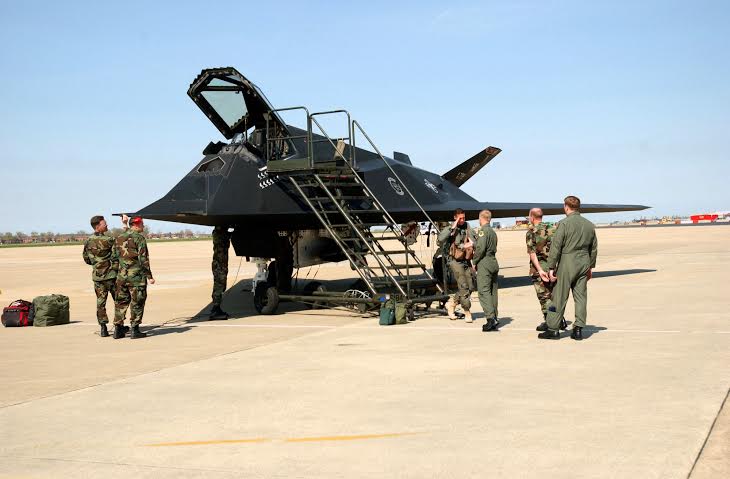F-117 Mysterious Flights. Is the Riddle Solved? Maybe or maybe not.
Last month we published some photographs, shot around Tonopah Test Range, that proved that one or more F-117 Nighthawk stealth jets are still flying 6 years after being officially retired by the U.S. Air Force.
The story created a lot of hype and many speculations regarding the reason behind the mysterious activity.
We mentioned several different explainations behind the flights (in plain daylight), ranging from tests of new radar systems, which would be capable of detecting stealthy aircraft, to modified UCAV versions, through tests of new weapons, up to a brave hypothesis of getting the Nighthawks modernized and operational again.
Apparently, the reason seems to be not so exciting. Defense News’s Aaron Mehta has obtained an official explaination from the U.S. Air Force.
According to the USAF, the jet is kept in a “Type 1000” storage, which means that the type is to be maintained until called into active service.
The aircraft are re-preserved in 4 year periods and due to the type of storage, they are to be capable of being brought back into operation within the period of 30-120 days.
This version of the story is confirmed by Dziennik Zbrojny, one of the leading Polish defense outlets which quotes a USAF spokesperson as well.
What is the reason for the flights then? Well, flights are a form of a routine check, which ensures that the F-117 is still airworthy.
The Nighthawk fleet has been retired back in 2008 and maintained inside the Tonopah Test Range Hangars.
Desert conditions of Nevada are beneficial for maintaining the stealth jets in pristine conditions (due to the low level of humidity and hence, lower probability of corrosion). Since, according to the source quoted by Defense News, maintaining the jets at AMARC, at Davis-Monthan AFB, would be less cost-effective (means of secure storage would have to be implemented), the Tonopah infrastructure has been used instead.
Reasonable.
However we can’t but notice that it is at least weird that a somehow obsolete fleet (the F-117 was the first stealth jet designed back in the 1970s and inducted into active service in 1983) is kept in operational status by flying a handful of planes every now and then. The Air Force is struggling to retire some active, possibly hard-to-replace aircraft (as the A-10 Thunderbolt) because they are not suitable to modern scenarios and to save money: why would they spend money to keep the aircrews proficient and the fascinating but old aircraft in flyable conditions? How would a few Black Jets be employed in a modern scenario considering their rather archaic weapons control system?
We don’t want to fuel conspiracy theories but, as suggested by our friends at lazygranch.com, after the retirement, the F-117 were sometimes spotted over the TTR during test flights which involved the MIT Gulfstream N105TB: if confirmed this joint activity might point towards something different than a routine airworthiness check sortie.
Ok, as said, the story of the storage 1000 is reasonable, but a few questions are yet to be answered.
Written with Jacek Siminski
Image credit: U.S. Air Force
















